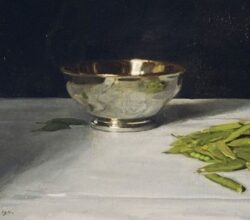
William Nicholson and the pleasure in the paint
Michael Prodger | The New Statesman | 26th November 2025
The perils of versatility. Nicholson started by designing posters where he showed “an aversion to the extraneous”. Then came book illustrations, portraits, “iconic” still lifes and landscapes. Out of all that his posters have proved influential as have his “striking” portraits. Versatility is enough to make him “beloved” but too much to be deemed distinctive. Nicholson seemingly was unconcerned, wanting only to “communicate what in the natural is irresistible and … what in the act of communication is pleasurable.”
